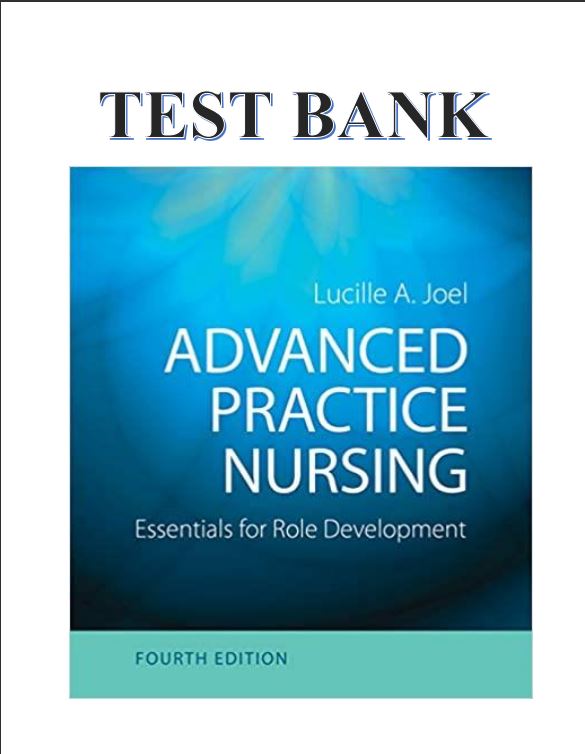Advanced Practice Nursing Essentials For Role Development 4th Edition
Advanced Practice Nursing Essentials For Role Development 4th Edition
Couldn't load pickup availability
CHAPTER1:
ANSWERS AND RATIONALES
1. Which change represents the primary impetus for the end of the era of the female lay
healer?
1. Perception of health promotion as an obligation
2. Development of a clinical nurse specialist position statement
3. Foundation of the American Association of Nurse-Midwives
4. Emergence of a medical establishment
Page: 4
Feedback
1. This is incorrect. Lay healers traditionally viewed their role as being a function
of their community obligations; however, the emerging medical
establishment viewed healing as a commodity. The emergence of a male
medical establishment represents the primary impetus for the end of the era
of the female lay healer.
2. This is incorrect. The American Nurses Association (ANA) position statement
on educational requirements for the clinical nurse specialist (CNS) was
developed in 1965; the ANA’s position statement on the role of the CNS was
issued in 1976. The emergence of a male medical establishment represents
the primary impetus for the end of the era of the female lay healer.
3. This is incorrect. The American Association of Nurse-Midwives (AANM) was
founded in 1928. The emergence of a male medical establishment represents
the primary impetus for the end of the era of the female lay healer.
4. This is correct. The emergence of a male medical establishment represents
the primary impetus for the end of the era of the female lay healer. Whereas
lay healers viewed their role as being a function of their community
obligations, the emerging medical establishment viewed healing as a
commodity. The era of the female lay healer began and ended in the 19th
century. The American Association of Nurse-Midwives (AANM) was founded
in 1928. The American Nurses Association (ANA) position statement on
educational requirements for the clinical nurse specialist (CNS) was developed
in 1965; the ANA’s position statement on the role of the CNS was issued in
1976.
2. The beginning of modern nursing is traditionally considered to have begun with which
event?
1. Establishment of the first school of nursing
2. Incorporation of midwifery by the lay healer
3. Establishment of the Frontier Nursing Service (FNS)
4. Creation of the American Association of Nurse-Midwives (AANM)
Answer: 1
Pages: 4–5
Feedback
1. This is correct. Traditionally, modern nursing is considered to have begun in
1873, when the first three U.S. training schools for nurses opened. The role of
the lay healer as a midwife is documented to have occurred in the 19th
century, before the establishment of schools of nursing. The Frontier Nursing
Service (FNS), which provided nurse-midwifery services, was established in
1925. In 1928, the Kentucky State Association of Midwives, which was an
outgrowth of the FNS, became the American Association of Nurse-Midwives
(AANM).
2. This is incorrect. The role of the lay healer as a midwife is documented to
have occurred in the 19th century, before the establishment of schools of
nursing. Traditionally, modern nursing is considered to have begun in 1873,
when the first three U.S. training schools for nurses opened.
3. This is incorrect. The Frontier Nursing Service (FNS), which provided nursemidwifery services, was established in 1925. Traditionally, modern nursing is
considered to have begun in 1873, when the first three U.S. training schools
for nurses opened.
4. This is incorrect. In 1928, the Kentucky State Association of Midwives, which
was an outgrowth of the FNS, became the American Association of NurseMidwives (AANM). Modern nursing is considered to have begun in 1873, at
which time the first three U.S. training schools for nurses opened.
3. In 1910, which factors most significantly influenced the midwifery profession? Select
all that apply.
1. Strict licensing requirements
2. Negative public perception
3. Dedicated funding for training
4. Poor maternal-child outcomes
5. Mandatory professional supervision
Share

